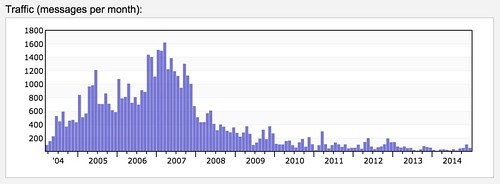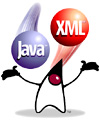Last week, I had the pleasure of traveling to Washington, DC to speak at the annual SpringOne 2GX conference. I was pretty stressed for the last few weeks because I had to create two new presentations from scratch, and both had to be 90 minutes long. I was also hoping to finish the JHipster Book before the conference started. I was able to finish both presentations in the nick of time, but did not find the time to write the last chapter in the JHipster Book.
The first presentation was titled Comparing Hot JavaScript Frameworks: AngularJS, Ember.js and React.js. I started by revisiting the Comparing JVM Web Frameworks talk I did at vJUG last February. I explained how I think traditional web frameworks are no longer relevant in 2015, but I do believe server-side rendering is still very relevant. From there, I used Yevgeniy Brikman’s framework scorecard (from his Node.js vs. Play Framework presentation) to rank each framework by a number of different criteria. You can see the final results on slide 160. Since the scores were so close, I believe you could tweak some scores a bit (or add weights to the different criteria) and make any of the frameworks come out on top.
You can click through the presentation below, download it from my presentations page, or see it on SlideShare.
I started writing the second presentation a week before I had to deliver it. On Thursday, September 10th, I stayed up late, trying to figure out how to create a good presentation on NoXML and finish the last part of the JHipster Book. Then it came to me, I needed to parallelize and do them both at the same time. I decided to compare AppFuse (which is similar to a legacy Spring application with lots of XML) to JHipster (which hardly contains any XML).
I wrote a 10-page Google Doc on how I planned to do this, then went rafting and camping with my family for the weekend. I finished most of the presentation on Monday night, but then realized the presentation wouldn't be long enough to fill 90 minutes. So I hunkered down at midnight, created a new AppFuse application and removed a bunch of its XML. This took me until 3:30am, and I was able to accomplish the following tasks:
- Spring XML to Java
- Spring Security Configuration to Java
- web.xml to WebApplicationInitializer
- Spring MVC to Java
- Migrated to Spring Boot
- Maven to Groovy
I was pretty pumped when I completed my final goal: converting to Spring Boot and getting a test to pass. I made commits to an appfuse-noxml project on GitHub as I accomplished each step. You can see all the changes in the project's commit log. While I'd figured everything out, I still needed to complete the presentation. Luckily, I found time to do this the night before, the morning of, and in the final hour before I had to deliver the talk. You can imagine my relief when I was done delivering both talks.
You can click through the presentation below, download it from my presentations page, or view it on SlideShare.
While I didn't get to spend much time at the conference, I did have a lot of fun while I was there. I got to meet some new folks, reconnect with old friends, and enjoy beers and dinner with a smiling crew on Thursday night. The Broncos victory late that night was the icing on the cake. 







